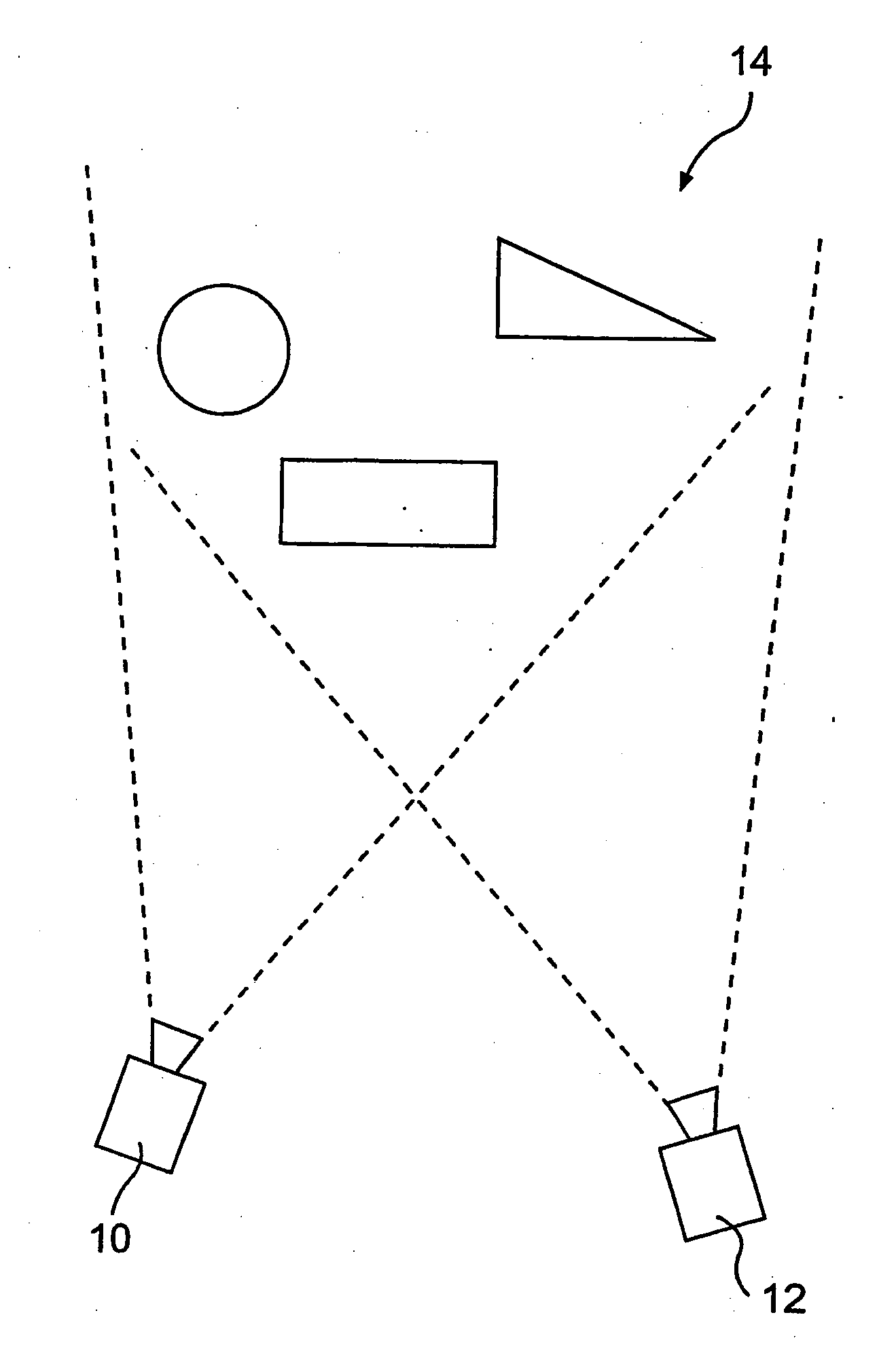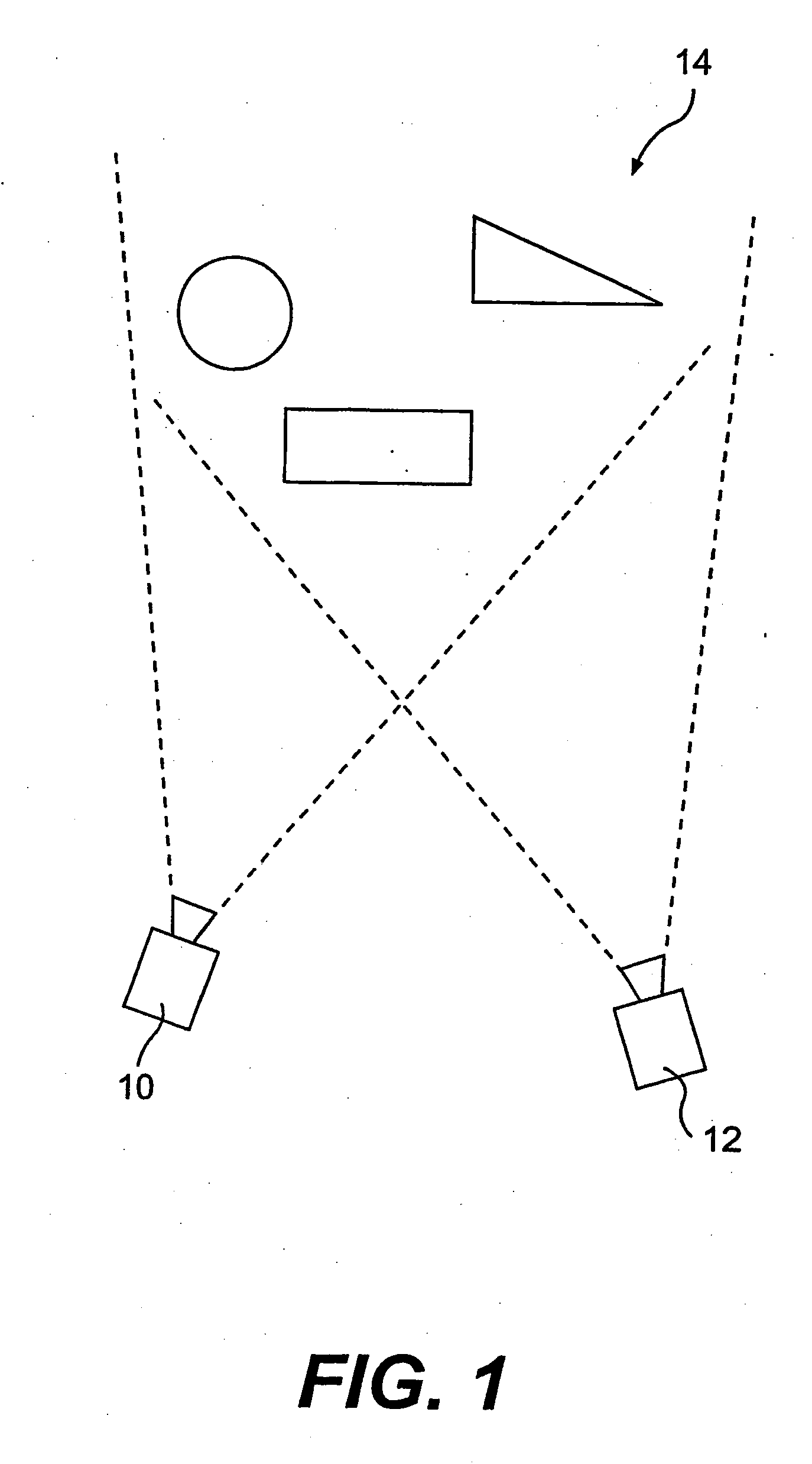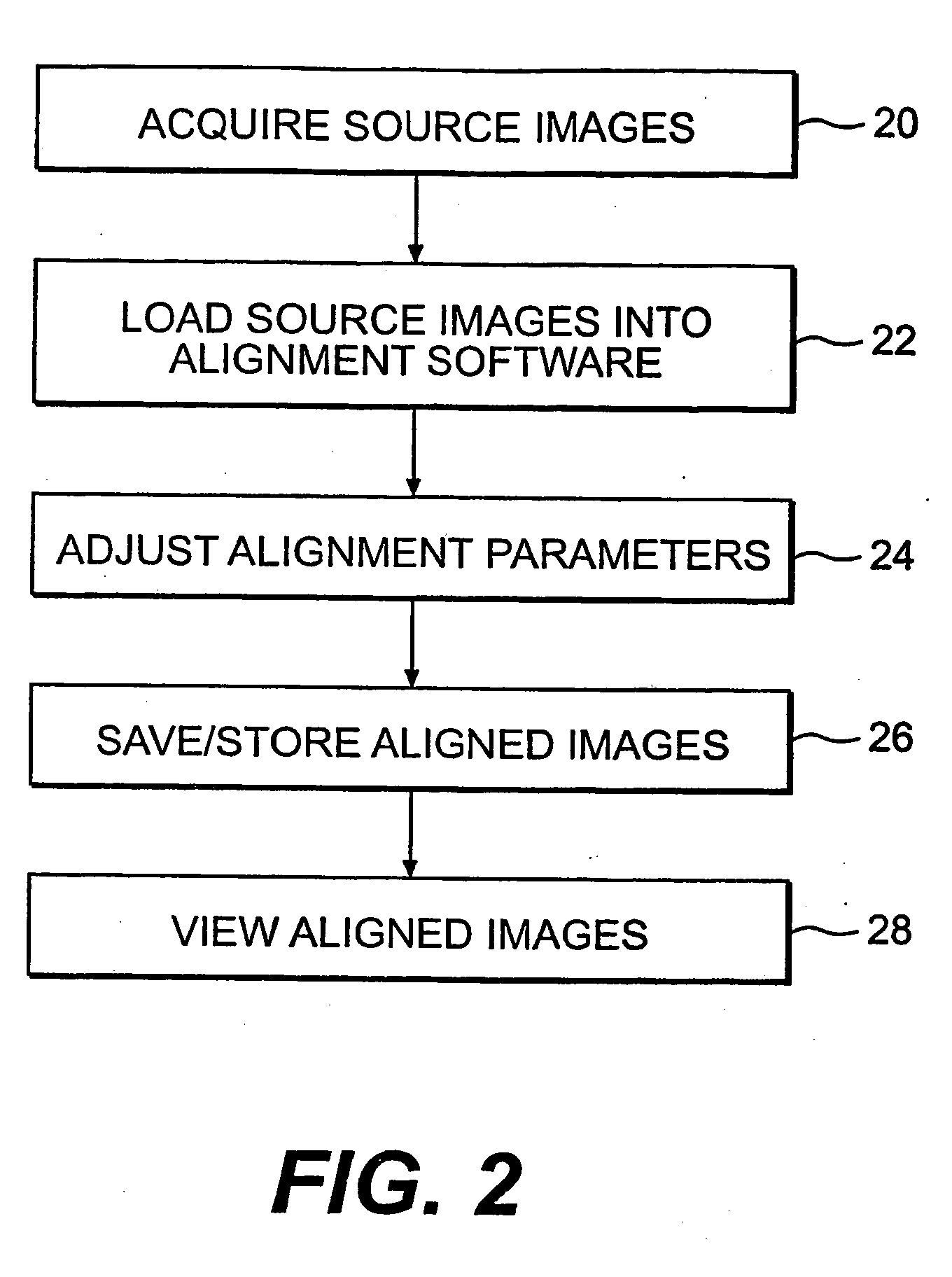Critical alignment of parallax images for autostereoscopic display
a parallax image and autostereoscopic technology, applied in the visual arts, can solve the problems of cumbersome alignment of multiple cameras at a common scene, inability to readjust image alignment, and difficulty in proper alignment and color/luminance matching of cameras
- Summary
- Abstract
- Description
- Claims
- Application Information
AI Technical Summary
Benefits of technology
Problems solved by technology
Method used
Image
Examples
Embodiment Construction
[0017] One exemplary embodiment of the present invention includes a method for creating an autostereoscopic display by manipulating parallax images to create a resultant moving image. The resultant moving image may provide an autostereoscopic display and may be viewed on a conventional screen (e.g., a TV, computer monitor, a projection screen, moving image display, or any other type of display on which a moving image may be shown) As discussed above, parallax images include two or more images with overlapping visual fields but different points of view. For example, as illustrated in FIG. 1, a camera 10 may capture a first set of images and a camera 12 may capture a second set of images of a common scene 14 while being displaced from one another. The resulting sets of images from cameras 10 and 12 will be parallax images. That is, the set of images from camera 10 and the set of images from camera 12 will include some duplicated visual information by virtue of the fact that cameras 10...
PUM
 Login to View More
Login to View More Abstract
Description
Claims
Application Information
 Login to View More
Login to View More - R&D
- Intellectual Property
- Life Sciences
- Materials
- Tech Scout
- Unparalleled Data Quality
- Higher Quality Content
- 60% Fewer Hallucinations
Browse by: Latest US Patents, China's latest patents, Technical Efficacy Thesaurus, Application Domain, Technology Topic, Popular Technical Reports.
© 2025 PatSnap. All rights reserved.Legal|Privacy policy|Modern Slavery Act Transparency Statement|Sitemap|About US| Contact US: help@patsnap.com



